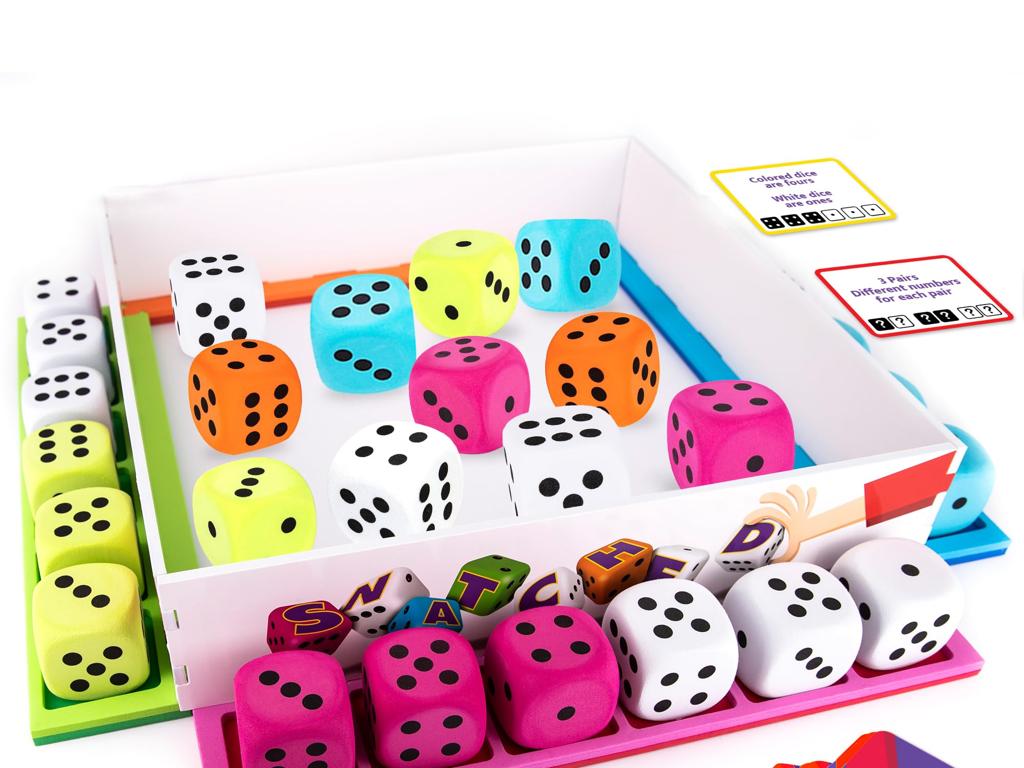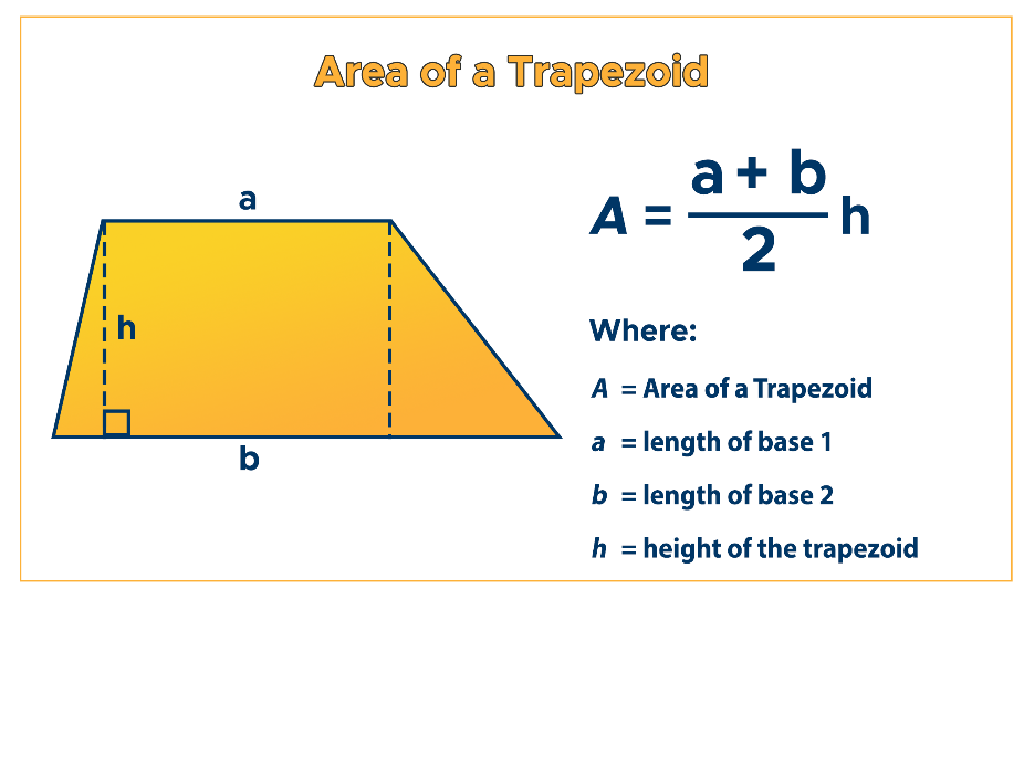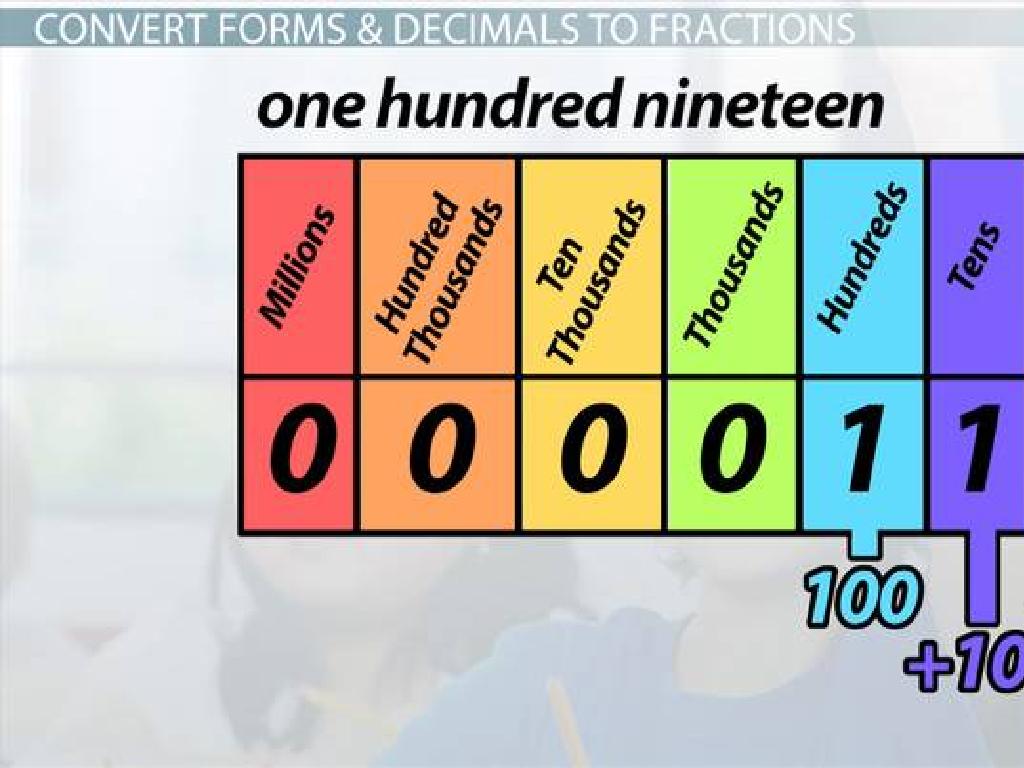Count Atoms In Chemical Formulas
Subject: Science
Grade: Fifth grade
Topic: Atoms And Molecules
Please LOG IN to download the presentation. Access is available to registered users only.
View More Content
Atoms & Molecules: Building Blocks of Matter
– Atoms: Matter’s tiny units
– Everything is made of atoms, like LEGO blocks building a tower.
– Molecules: Atoms join together
– When atoms link up, they form molecules, like H2O for water.
– Substances are made of molecules
– Different molecules combine to form all substances around us.
– Atoms & molecules in daily life
– From water to air, atoms and molecules are everywhere we look.
|
This slide introduces the fundamental concepts of atoms and molecules to fifth-grade students. Atoms are the smallest units of matter, indivisible by chemical means, and are the building blocks of everything in the universe. Molecules are groups of atoms bonded together, representing the smallest fundamental units of a chemical compound that can take part in a chemical reaction. Understanding the role of atoms and molecules in forming substances is crucial for students as it lays the groundwork for comprehending chemical reactions and the composition of objects around them. Relate the concept to everyday life by discussing common substances like water, oxygen, and carbon dioxide to illustrate the presence and importance of atoms and molecules in the world.
Exploring Chemical Formulas
– What’s a chemical formula?
– It’s a way to show what atoms are in a compound, like H2O for water.
– Reading chemical formulas
– Each letter stands for an element and the number tells how many atoms, like CO2 for carbon dioxide.
– Examples of simple formulas
– H2O has 2 hydrogen (H) atoms and 1 oxygen (O) atom, NaCl has 1 sodium (Na) atom and 1 chlorine (Cl) atom.
– Practice counting atoms
– Let’s count atoms in H2O, CO2, and NaCl together.
|
This slide introduces students to the concept of chemical formulas, which are shorthand representations of the types and numbers of atoms in a compound. Start by explaining that each element is represented by a letter or pair of letters, known as its chemical symbol. The numbers after the symbols indicate how many atoms of each element are present. Use familiar substances like water (H2O) and carbon dioxide (CO2) as examples. Encourage students to practice counting atoms in various chemical formulas to reinforce their understanding. This activity will help them grasp the basics of chemical composition and set the foundation for more complex chemistry concepts.
Counting Atoms in Chemical Formulas
– Identify different atoms in formulas
– Significance of subscripts
– Subscripts tell us how many atoms of each element are present
– Count atoms in H2O
– H2O has 2 hydrogen (H) atoms and 1 oxygen (O) atom
– Count atoms in CO2
– CO2 has 1 carbon (C) atom and 2 oxygen (O) atoms
|
This slide introduces the concept of counting atoms within chemical formulas, a fundamental skill in understanding chemical composition. Start by explaining how to identify different elements represented by their unique symbols in a formula. Then, discuss the role of subscripts, which indicate the number of atoms of each element in a molecule. Use water (H2O) and carbon dioxide (CO2) as examples to practice counting. For H2O, there are two hydrogen atoms and one oxygen atom. For CO2, there is one carbon atom and two oxygen atoms. Encourage students to look for patterns and use hands-on activities, like building models, to visualize the concept.
Counting Atoms in Chemical Formulas
– Example 1: Glucose (C6H12O6)
– Glucose has 6 Carbon (C), 12 Hydrogen (H), and 6 Oxygen (O) atoms.
– Example 2: Table Salt (NaCl)
– Table salt has 1 Sodium (Na) and 1 Chlorine (Cl) atom.
– Group Activity: Counting Atoms
– Pair up and practice counting atoms in various chemical formulas.
|
This slide is designed to provide students with practical examples of counting atoms in chemical formulas. Start by explaining the formula for glucose, C6H12O6, which means it has 6 carbon atoms, 12 hydrogen atoms, and 6 oxygen atoms. Then, move on to table salt, NaCl, which is composed of one sodium atom and one chlorine atom. For the group activity, have students work in pairs to count atoms in a list of given chemical formulas. This will help them apply what they’ve learned in a collaborative setting. Provide guidance on how to approach the task and ensure each pair has a set of formulas to work with. Possible activities could include counting atoms in water (H2O), carbon dioxide (CO2), and ammonia (NH3).
Complex Chemical Formulas
– Explore complex formulas
– Break down formulas into parts
– Like a puzzle, find each element and count them
– Count atoms in an example
– H2O2 has 2 Hydrogen (H) and 2 Oxygen (O) atoms
– Practice with more formulas
– Try counting atoms in C6H12O6
|
This slide introduces students to more complex chemical formulas beyond the basic ones they may already be familiar with. Start by explaining that complex formulas represent molecules with a larger number of atoms and different elements. Teach them how to break down these formulas into simpler parts by identifying and counting each type of atom present. Use an example such as hydrogen peroxide (H2O2) to illustrate the process of counting atoms. Encourage students to practice with more complex formulas like glucose (C6H12O6), reinforcing their understanding of the concept. Provide guidance on how to approach larger molecules systematically and ensure they understand the significance of subscripts in representing the number of atoms.
Class Activity: Atom Counting Challenge
– Divide into small groups
– Receive chemical formula sets
– Count atoms in each formula
– For H2O, count 2 Hydrogen (H) and 1 Oxygen (O)
– Share results with class
|
This activity is designed to encourage teamwork and enhance students’ understanding of chemical formulas. By working in small groups, students can collaborate to identify and count the atoms in various chemical formulas. Provide each group with a diverse set of chemical formulas, ensuring a mix of simple and more complex ones. As they work through the challenge, circulate to offer guidance and ensure they understand the subscript numbers indicate the quantity of atoms. After the activity, have each group share their findings, fostering a discussion about any discrepancies and reinforcing the concept of atom counting. Possible formulas to include: H2O, CO2, NaCl, C6H12O6. This will help solidify their understanding of molecular composition and the importance of chemical formulas in representing compounds.
Conclusion: Counting Atoms in Chemical Formulas
– Importance of counting atoms
Understanding atom counts is key to grasping chemical reactions.
– Steps to count atoms reviewed
Identify elements, then tally atoms for each; use subscripts for guidance.
– Encourage curious questions
Asking questions helps clarify and deepen your understanding.
– Practice makes perfect
|
As we wrap up, remember that counting atoms in chemical formulas is crucial for understanding how substances interact during chemical reactions. It’s like knowing the ingredients in a recipe. We’ve learned to identify each element in a formula and use the subscripts to count the atoms present. Encourage students to always ask questions if they’re unsure about how to count atoms or read a formula. To solidify their learning, students should practice with different chemical formulas, gradually increasing complexity as they become more confident. Provide additional worksheets for practice and consider pairing students for peer learning opportunities.
Homework: Counting Atoms in Chemical Formulas
– Receive your worksheet with formulas
– Count atoms in each chemical formula
– H2O has 2 hydrogen (H) atoms and 1 oxygen (O) atom
– Note down your atom counts
– Write your answers on the worksheet
– Get ready to discuss in class
|
This homework assignment is designed to reinforce the lesson on counting atoms within chemical formulas. Students will receive a worksheet with a variety of chemical formulas. They are expected to identify and count the number of each type of atom present in the formulas. For example, in the molecule of water (H2O), there are two hydrogen atoms and one oxygen atom. Encourage students to write down their counts clearly and be prepared to discuss how they reached their answers in the next class. This exercise will help them understand the composition of different molecules and the basics of chemical notation. Provide examples on the worksheet that range in complexity to cater to all learning levels in the class.






